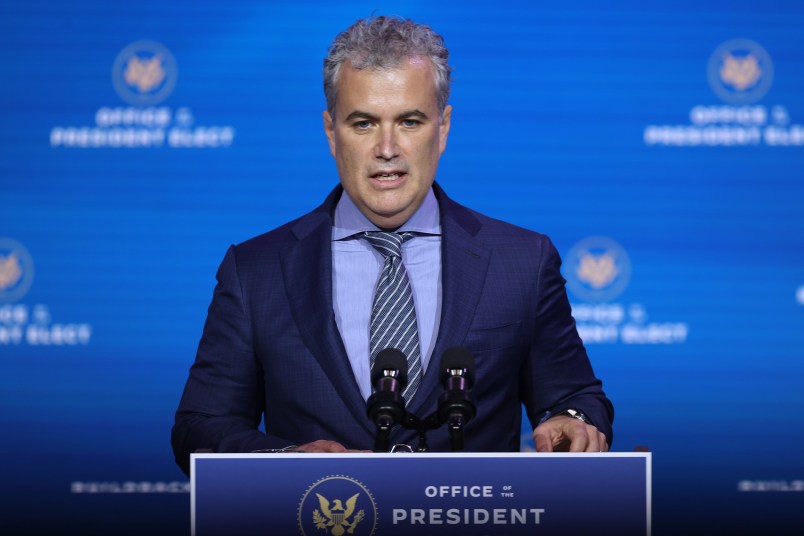White House COVID-19 Response Coordinator Jeff Zients said on Tuesday that federal health agencies’ recommendation to pause Johnson & Johnson’s COVID-19 vaccine would not cause a major disruption to the Biden administration’s vaccine rollout program.
“This announcement will not have a significant impact on our vaccination plan: Johnson & Johnson vaccine makes up less than 5 percent of the recorded shots in arms in the United States to date,” Zients said in a statement.
The official stated that the 300 million doses of Pfizer and Moderna’s vaccines secured by President Joe Biden meant there was “more than enough supply to continue the current pace of vaccinations of 3 million shots per day, and meet the President’s goal of 200 million shots by his 100th day in office.”
Earlier on Tuesday, the Food and Drug Administration (FDA) and Centers for Disease Control and Prevention (CDC) released a joint recommendation advising health care providers to stop administering J&J’s vaccine “out of an abundance of caution” while the agencies investigate the six reported cases of blood clots after the patients received the vaccine.
The agencies noted that the clots “appear to be extremely rare.”
During the FDA and CDC’s press conference on their announcement, acting FDA Commissioner Janet Woodcock said the pause was expected to last for “a matter of days.”
Shortly after the FDA and CDC made the recommendation, several states announced they would cease the distribution of J&J’s vaccine.
The pharmaceutical company said on Tuesday that it was “aware of an extremely rare disorder involving people with blood clots in combination with low platelets in a small number of individuals who have received our COVID-19 vaccine.”







Given the disruption in the J&J production, resulting from the mixing error, no significant impact might actually be the case in the long run. But how soon can Pfizer and Moderna vaccines be re-routed to sites that had been using the J&J? At the minimum, likely to cause scheduling havoc for those already slated to get the J&J.
I read in another article that the afflicted are all women 18 to 48 is it possible that there was some sort of conflict with meds particular to that cohort?
Medical peep please weigh in
What about the people who are scheduled to receive J&J?
Possible contraceptive use. I just found that the type of clot they’re seeing is connected to estrogen, which I’d guess could mean possibly HRT too. So this could have significance but perhaps not. I’m sure they’re looking into it and probably already know whether it could be a factor, but they have to be dead sure in this case.
Disclaimer: I am not a doctor, nor do I play one on TPM.
Men actually have overall a higher risk of thrombosis in general.
However, men also have a habit of not going to seek medical care unless they cut a limb off (and even then, may just try to duct tape it back on).
With only six cases to go off of here, none fatal, quite likely that we’re seeing more of that impact than anything else.